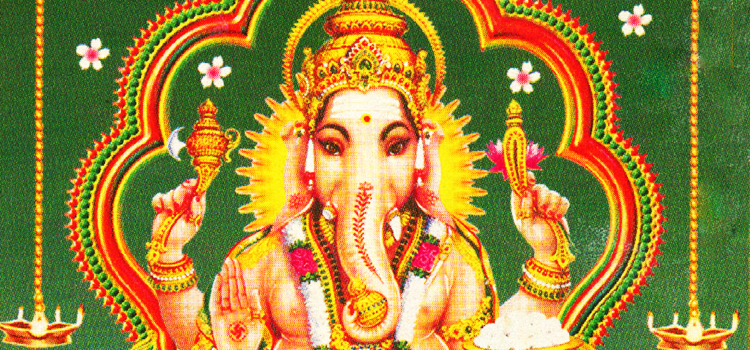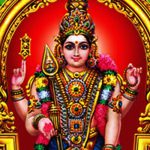Introduction
Dedicated to Ganesha, the God of Beginnings, Sankashti Chaturthi falls on the fourth day of Krishna Paksha (dark lunar or waning phase of the Moon). People observe this day every month. If this festival falls on a Tuesday, it is called Angarika (burning red embers/Mars) Sankashti Chaturthi and the most important among all Sankashti Chaturthi days.
In every lunar month, there are two Chaturthi Thithis. The one that falls after Pournami (Full Moon) after Krishna Paksha is called Sankashti Chaturthi. The Thithi that falls after Amavasya (New Moon) during Shukla Paksha is called Vinayaka Chaturthi. Sankashti means deliverance from troubles.
Sankashti Chaturthi Dates in 2020
| Date | Day | Starting Time | Ending Time | Chaturthi |
| 13/01/2020 | Monday | 05:32 PM, Jan 13 | 02:49 PM, Jan 14 | Lambodara Sankashti Chaturthi |
| 12/02/2020 | Wednesday | 02:52 AM, Feb 12 | 11:39 PM, Feb 12 | Dwijapriya Sankashti Chaturthi |
| 12/03/2020 | Thursday | 11:58 AM, Mar 12 | 08:50 AM, Mar 13 | Bhalachandra Sankashti Chaturthi |
| 11/04/2020 | Saturday | 09:31 PM, Apr 10 | 07:01 PM, Apr 11 | Vikata Sankashti Chaturthi |
| 10/05/2020 | Sunday | 08:04 AM, May 10 | 06:35 AM, May 11 | Ekadanta Sankashti Chaturthi |
| 08/06/2020 | Monday | 07:56 PM, Jun 08 | 07:38 PM, Jun 09 | Krishnapingala Sankashti Chaturthi |
| 08/07/2020 | Wednesday | 09:18 AM, Jul 08 | 10:11 AM, Jul 09 | Gajanana Sankashti Chaturthi |
| 07/08/2020 | Friday | 12:14 AM, Aug 07 | 02:06 AM, Aug 08 | Bahula Chaturthi |
| 05/09/2020 | Saturday | 04:38 PM, Sep 05 | 07:06 PM, Sep 06 | Vighnaraja Sankashti Chaturthi |
| 05/10/2020 | Monday | 10:02 AM, Oct 05 | 12:31 PM, Oct 06 | Vibhuvana Sankashti Chaturthi |
| 04/11/2020 | Wednesday | 03:24 AM, Nov 04 | 05:14 AM, Nov 05 | Vakratunda Sankashti Chaturthi |
| 03/12/2020 | Thursday | 07:26 PM, Dec 03 | 08:03 PM, Dec 04 | Ganadhipa Sankashti Chaturthi |
Origin of Sankashti Chaturthi
The festival was initiated by Abisheka Maharishi when he was tutoring his pupil Aishwarya in the course of teaching the scriptures. It was instituted around 700 B.C. as a ritual to remove all obstacles.
History of Sankashti Chaturthi
Hindu scriptures have it that Angarak, son of Mother Earth, and Maharishi Bharadwaj was an accomplished rishi himself. He was a great devotee of Ganesha. On Magh Krishna Chaturthi, which fell on a Tuesday, Ganesha blessed Angarak and asked him for a wish. Angarak’s only desire was that his name should be associated with Ganesha’s name forever. Ganesha granted the desire stating that henceforth whoever worshipped him on Angarika Chaturthi would be granted their wish. From that day onwards, the Magh Krishna Chaturthi was called the Angarika Chaturthi.
Legend of Sankashti Chaturthi
Parvati created Ganesha from the turmeric paste she used for her bath and breathed life into him. She told Ganesha to stand guard at the entrance and not allow anyone to enter while she bathed. Shiva came after a while, and Ganesha, unaware of his identity, stopped him from entering.
Enraged by Ganesha’s attitude, Shiva called upon the other Gods to teach Ganesha a lesson. Being born of Parvati and an embodiment of Shakti, Ganesha was invincible. Narada saw the growing turmoil, and along with the Saptarishis (seven wise sages,) tried to placate Ganesha but failed to do so. Indra, king of the Gods, attacked Ganesha with his army, but could not defeat him.
Shiva, along with Vishnu and Brahma (Trimurti), waged war against Ganesha. During the battle, Shiva’s spear beheaded Ganesha’s head from his body. An enraged Parvati revealed her real Adi Shakti and vowed to destroy the entire universe.
The Trinity prostrated before Parvati and Shiva promised her that he would bring Ganesha back to life. The trio hunted for a head and came upon a mother elephant crying over her dead baby. They consoled the mother and then fixed the baby elephant’s head on Ganesha. Hence, he is called the Elephant God. Shiva then declared Ganesha to be superior to all Gods, except for Vishnu, Lakshmi, Shiva, and Parvati.
Rituals Associated with Sankashti Chaturthi
People rise before sunrise on the day of Sankashti Chaturthi. Devotees observe fasting from sunrise to sunset. They consume only fruits, vegetables, and roots. The staple diet for Sankashti Chaturthi is Sabudana Khichdi, potato, and peanuts. Ladies observe the fast for the well-being and longevity of their family members.
They pray to Ganesha, and then after the auspicious Darshan (view) of the Moon, they break their fast. They offer Druva grass, flowers, and also light incense sticks. Devotees then read the Vrat Katha associated with the month and break the fast only after they observe the Moon rising. They also visit Ganesha temples on this day.
The Modaks (an offering) play a unique role in the Sankashti Chaturthi. They are a favorite food of Ganesha, prepared by devotees during the festival. People offer Modaks as Neivedyam (food offering). Devotees then perform the Aarti (Pooja) and distribute the Prasad (sacred offering) among the devotees.
People perform special pooja rituals to the Chandra Deva (Moon God). Devotees sprinkle water, sandalwood paste, consecrated rice, and flowers towards the Moon. They recite Vedic mantras. They chant the Ganesha Ashtothra and Sankashtnashana Stotra, to name a few.
Significance of Sankashti Chaturthi
Angarika means burning red embers of coal and also alludes to the planet Mars, also named Tuesday. Ganesha is the God who removes all obstacles and has supreme intelligence. Devotees recite the Ganapathi Atharvasheersha before moonlight to invoke his blessings.
Every month, devotees perform the Sankastha Ganapathi Pooja prayer. People worship Ganesha with a different name and Peeta (lotus petals). Every Vrat (fast) has a different story explained by a Vrat Katha. The prayer offerings have 13 Vrat Kathas, one for each month, and the thirteenth is for Adhika (the extra month occurring every four years as per Hindu calendar).
Ganesha descends to earth for his devotees on this day. Childless couples pray for progeny and observe the Sankashti Chaturthi Vrat. People pray to Ganesha as the God of wisdom, prosperity, and good fortune.
The significance of Sankashti Chaturthi finds mention in the Bhavishaya Purana and Narasimha Purana. Devotees celebrate Sankashti Chaturthi primarily across Maharashtra and Tamil Nadu. For them, Ganesha holds divine significance among all celestial deities. People worship him before they start any pooja or initiating any new venture.
People call Ganesha by other names including, Vignahartha – remover of obstacles, Ganadhipa – one who leads the masses, Ekadanta- one who has only one tusk, Lambodara – one who has a pot-belly and Gajanana – one who has the face of an elephant. Ganesha is widely considered the God of letters, learning, and wisdom.
Sankashti Chaturthi is also called Sankatahara Chaturthi, among Tamil Hindus or Ganesha Sankatahara. The festival is also called Dwijapriya Sankashti Chaturthi. Ganesha gives deliverance to his devotees from difficult times and obstacles in life.
Benefits of Sankashti Chaturthi
Devotees pray to Ganesha, observe the fast, and perform the Sankashti Chaturthi Vrat Puja. Ganesha blesses devotees and removes obstacles or difficulties they may face. Observing the Vrat reduces the problems in a person’s life.
Couples without children pray to Ganesha for progeny and perform the Sankashti Chaturthi Vrat.


Your point of view caught my eye and was very interesting. Thanks. I have a question for you.
Your point of view caught my eye and was very interesting. Thanks. I have a question for you.
Access detailed information about the Audemars Piguet Royal Oak Offshore 15710ST here , including pricing insights ranging from $34,566 to $36,200 for stainless steel models.
The 42mm timepiece boasts a robust design with mechanical precision and durability , crafted in stainless steel .
Verified Piguet Royal Oak Offshore Diver 15710 watch
Analyze secondary market data , where limited editions fluctuate with demand, alongside pre-owned listings from the 1970s.
Get real-time updates on availability, specifications, and investment returns , with price comparisons for informed decisions.